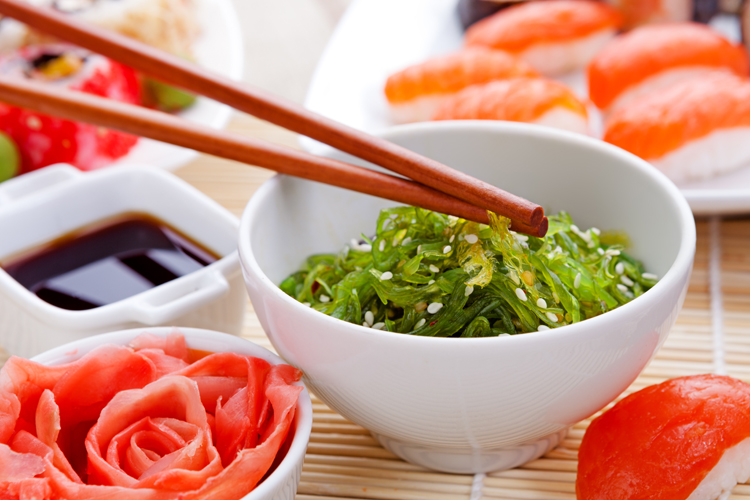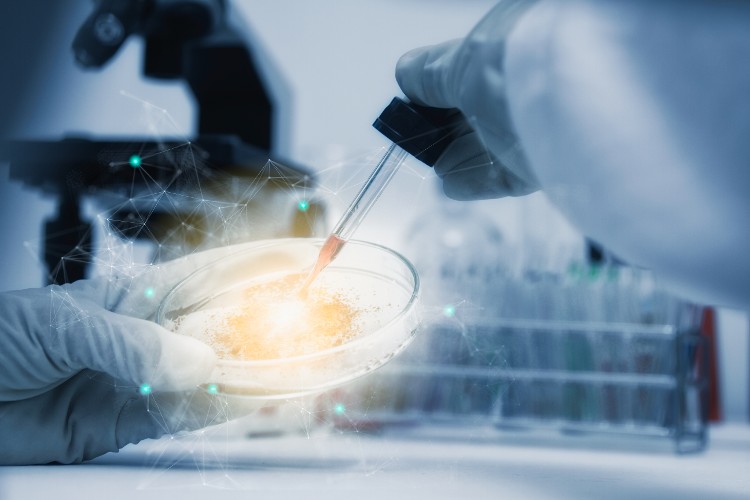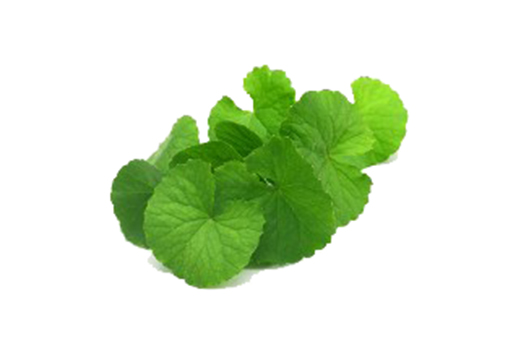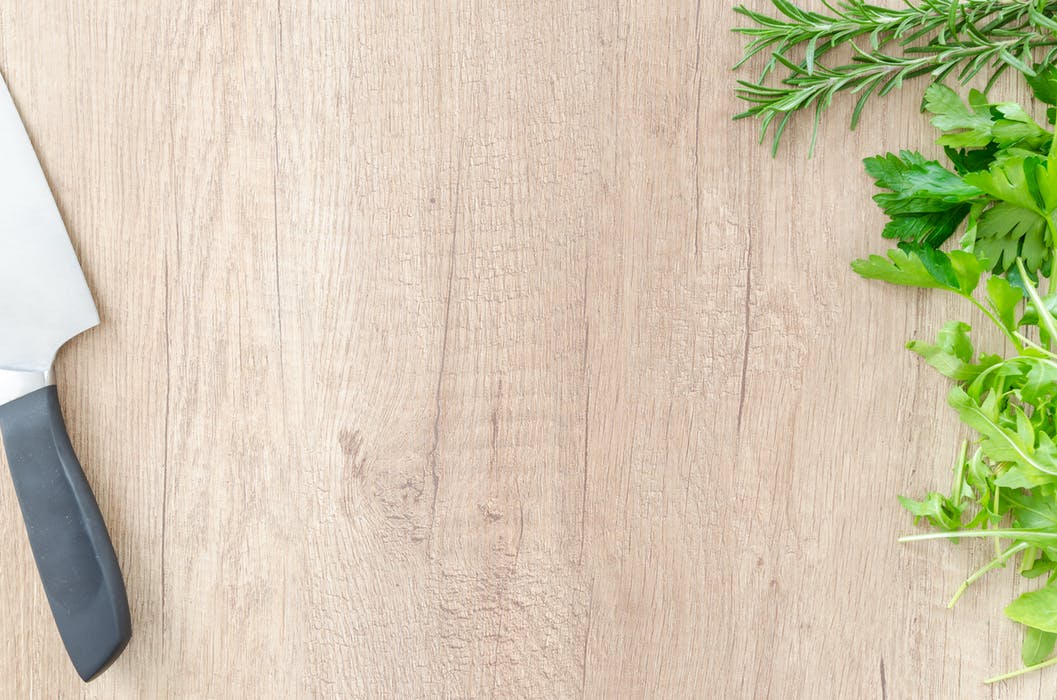Disclaimer: The information on curenaturally.org is intended to improve your knowledge about herbs and their benefits. Articles on this website are not intended to replace medical treatment from your doctor. Always consult your doctor before starting a new treatment regimen.
 |
Page Update 08/29/2019
Seaweed,
By Dr.Ashraf Girgis N.D.
|
Seaweed belongs to the algae family. More than 11,000 marine seaweed species exist. There are
red, brown, and green algae, kelp (large seaweeds), egg wrack, kombu /konbu and seaspaghetti seaweeds.
The scientific names are Funcus, Laminaria, Ascophyllum, among others.
|
|
|

|
History,
What we call seaweed has been used by the Japanese for a long time. For the past two thousand years, seaweed has been a super food in Japan which consumes more than 170,000 tons a year.According to natural knowlege247.com, some research also suggests that seaweed has been used since 2700 BC in China. In 600 BC, Sze Teu wrote that seaweed was made for special guests or kings. In 300 BC, Chi Hanwrote a book about seaweed. Kelp was used in the 5th century for food in China and Laminarajaponica (a specific species of seaweed) was imported from Japan in the 5th century.Chinese, Japanese, and Koreans have used it in their diet since ancient times
(Dawczynski et al. 2007). Aboriginal Native Americans have been harvesting seaweed on the Northern California Coastfor many thousands of years. The Kashaya (a subgroup of the Pomo people in Sonoma county) call the seaweed they harvest mei bil, sea leaf.
In Ireland, seaweed has been used to feed livestock and is used as mulch for soil. Seaweed is used as food in many coastal countries around the world; Indonesia currently is the largest
exporter followed by the Philippines.
|
|
|
|
|
Composition
Seaweed is 80–90% water. Its dry weight contains 50% carbohydrates, 1–3% lipids, and 7–38% minerals. The protein proportion is variable (10–47%) with high amount of essential amino acids (García-Casal et al. 2007). Because of their low fat content, they are low in calories (Rupérez 2002).Typical carbohydrates in brown seaweed varieties consist of fucoidan, laminaran (β-1,3-glucan),cellulose, alginates, and mannitol. Seaweed is a good source of fiber, Ca, vitamin A, vitamin C, vitamin E (alpha tocopherol),
vitamin K, niacin, pantothenic acid and phosphorus, and a very good source of riboflavin, folate,iron, magnesium, copper and manganese. According to a 2013 study published in the Journal of Environment conducted in the Egyptian Mediterranean coast, green seaweeds have higher
calcium than the red and brown ones. Also, red and brown seaweeds showed higher average levels of Na and K than the green species and could play an important role in the electrolyte balance in humans. Green seaweeds also had the highest average carbohydrate concentration; thus, these green species could be used as a source of polysaccharides (complex carbohydrate polymers like glycogen, starch and cellulose). Seaweeds contain very high level of iodine as well.
|

|
|
|
|
|

|
Medical benefits
Because seaweed has many nutrients and anti-oxidants such as vitamin C and vitamin A, it hasbeen used in the cosmetic industry as a cream. Ancient Romans used it for wound healing. In a study published in 2010, scientists found a compound called fucoidan in seaweed that inhibits lymphoma tumor cells in patients as well as mice, without affecting healthy cells. The lower rate of breast cancer in Japan among both pre and post-menopausal women is attributed to higher ingestion of seaweed.
Studies have shown that polyphenols (plant-based molecules that have antioxidant properties) present in seaweed also inhibit the growth and proliferation of cancer cells. Seaweeds are known as a highly nutritive food containing vitamins, protein, minerals, fiber, and essential fatty acids (Ortiz et al. 2006). Seaweeds are also one of the most important vegetable sources of calcium. On the one hand, the power of algal resources has been sought for thousands of years for their ability to prevent disease and prolong life. However, they have shown high potential in controlling antimicrobial, antitumor, anticoagulant, and cytotoxic activity
(Sabina et al. 2005). Seaweeds have alkalinizing properties, therefore helping in keeping blood pH neutralized. Seaweeds are rich in chlorophyll, which is a powerful, natural detoxifier thathelps to get rid of toxins from our body. This action is referred to as a chelation effect.
|
|
|
|
|
More Heath benefits:
Dr. Joy Frestedt of Frestedt, Inc., a company in Minnesota, conducted research on 22 individuals with arthritis taking a supplement derived from seaweed called Aquamin for 12 weeks. All participants were able to move their knees more and needed less use of NSAID
(anti-inflammatory analgesics that include like ibuprofen). The placebo group had no change in the level of pain intensity or range of motion and 5 of them had to drop out because of worsening
pain. No doubt there needs to be more studies to confirm these findings. Seaweed baths have been used for arthritis in Ireland dating to Edwardian times (1901-1910).
In a double blind study, 62 individuals with mild hypertension were given 12 gram per day of potassium-releasing seaweed preparations. Systolic blood pressure dropped about 11 points.
The high fiber content of fiber is also known to lower cholesterol. Residents of Okinawa, Japan,hwo eat seaweed regularly, are famous for their longevity.
Seaweed contains high levels of iodine and has therefore been used in the treatment of thyroid diseases. Low levels of thyroid hormones play a very important role in weight gain. Fucoxanthin, a pigment found in brown seaweed promotes fat burning and reduces fat absorption. In a study conducted in Newcastle England, small amounts of seaweed (alginate) reduced fat by 1/3rd.
|
 |
|
|
|
|

|
Dosage:
I suggest following the recommended dose marked on the label if you are using a prepared formulation. If you are using the real natural form, that is great. If you are able to make it taste good by adding proper seasoning (it needs lots of expertise to avoid the fishy taste), my recommendation is to consume two servings a week. The composition and the level of nutrients can vary depending on the source of the seaweed.
Side effects:
Side effects and interactions, Because of its high content of vitamin K, it can interfere with medicine such as warfarin. In Japan there have been cases of goiter (thyroid disease) and increase of TSH (thyroid stimulating hormone) has been noticed. Once the consumption of seaweed is stopped, the goiter disappears.Like any type of carotene-rich vegetable and drinks, excessive consumption can lead to the yellowness of skin. Some blue-green algae found in the Indian and Pacific oceans and Caribbean sea has been reported to cause dermatitis. There have been some GI symptoms and rare cases of death reported with two seaweeds called Gracilaria coronopifolia and Gracilaria tsudai.
|
|
|
|
References
-
ABSENGER, WERNER. "Pancreatic Cancer | Seaweed's Anti-Cancer Benefits |ACEF."
Absenger Cancer Education Foundation ACEF. N.p., 30 Apr. 2013.Web. 17 Jan. 2016.
El-Said, Ghada F., and Amany El-Sikaily. "Chemical Composition of Some Seaweed
fromMediterranean Sea Coast, Egypt." Environmental Monitoring and Assessment.
SpringerNetherlands,July 2013. Web. 17 Jan. 2016.
Filloux, Alain. "FEMS Microbiology Reviews." The Seaweed Holobiont:
UnderstandingSeaweed–bacteria Interactions. Oxford University, 1 May 2013. Web. 17 Jan. 2016.Greener, Mark. "How Superfood Seaweed Can Help Your Thyroid." N.p., Aug. 2014.
Web.17 Jan. 2016.
Marshall, K. L., and R. L. Vogt. "Illness Associated with Eating Seaweed, Hawaii,1994."
Western Journal of Medicine. U.S. National Library of Medicine, Nov. 1998. Web.
17 Jan. 2016.
Marshall KL, Vogt RL. Illness associated with eating seaweed, Hawaii, 1994. West J Med .
1998;169(5):293-295.
Alice Smellie for the Daily Mail. "Why Jamie's Seaweed Diet Could Help You Get Slim Too:
It Reduces Fat Absorption, Boosts Iron Levels and Keeps Hearts Healthy."
Mail Online. Associated Newspapers, 03 Sept. 2015. Web. 17 Jan. 2016.
"FEMS Microbiology Reviews." The Seaweed Holobiont: Understanding Seaweed–bacteria
Interactions. N.p., n.d. Web. 17 Jan. 2016.
Greener, Mark. "How Superfood Seaweed Can Help Your Thyroid." N.p., n.d. Web. 17 Jan. 2016.
"Mendocino Sea Vegetable Company." Mendocino Sea Vegetable Company. N.p., n.d. Web. 17 Jan. 2016.
"Nutrition Facts." And Analysis for Seaweed, Wakame, Raw. N.p., n.d. Web. 17 Jan. 2016.
"Pancreatic Cancer | Seaweed's Anti-Cancer Benefits | ACEF." Absenger Cancer Education
Foundation ACEF. N.p., 30 Apr. 2013. Web. 17 Jan. 2016."Pancreatic Cancer | Seaweed's Anti-Cancer Benefits | ACEF." Absenger Cancer EducationFoundation ACEF. N.p., 30 Apr. 2013. Web. 17 Jan. 2016.
"Seaweed May Help Treat Lymphoma." - Drugs.com MedNews. N.p., n.d. Web. Mar. 2010.
-
|
|
|
|
Additional Articles

11 Amazing Benefits Of Beets
Read More |

Gotu Kola: The Many Benefits of the Ancient Herb of Enlightenment and Longevity
Read More
|

8 health benefits of rosemary
Read More |
|
|
|
|